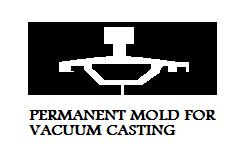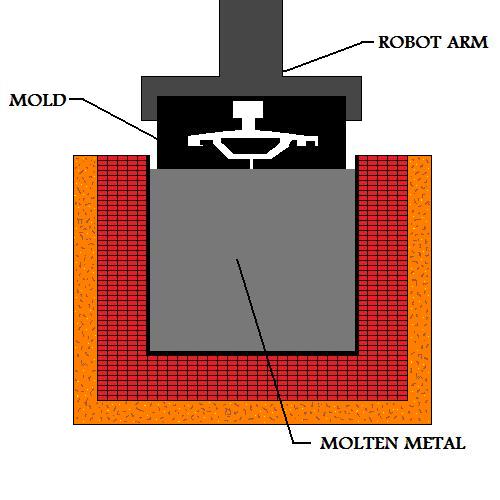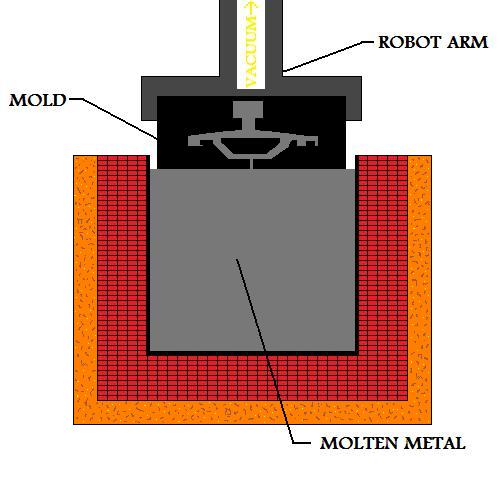METAL CASTING
PROCESSES
Metal Casting Principles
Metal Casting
Metal Casting Operation
Effect Of Gases On Metal Casting
Metal Casting Design
Expendable Mold Casting
Sand Casting
Plaster Mold Casting
Ceramic Mold Casting
Shell Mold Casting
Vacuum Casting or V-process
Expanded Polystyrene Casting
Investment Casting
Permanent Mold Casting
Basic Permanent Mold Casting
Slush Casting
Pressure Casting
Die Casting
Hot Die Casting
Cold Die Casting
True Centrifugal Casting
Semicentrifugal Casting
Centrifuge Casting
Ingot Casting
Continuous Casting
MANUFACTURING
PROCESSES
Metal Forming
Metal Rolling
Metal Forging
Metal Extrusion
Metal Drawing
Sheet Metal
Powder Processes
Vacuum Permanent Mold Casting
Vacuum permanent mold casting is a permanent mold casting process employed in manufacturing industry that uses the force caused by an applied vacuum pressure to draw molten metal into and through the mold's gating system and casting cavity. This process has a similar name to vacuum mold casting discussed in the expendable mold process section; however these are two completely different manufacturing processes and should not be confused with each other.
The Process
A permanent mold containing the part geometry and the gating system is created, (usually accurately machined), similar to the molds employed in the other permanent mold processes. The mold in vacuum mold casting is much like the mold in the pressure casting manufacturing process, in that the gating system is designed so that the flow of molten material starts at the bottom and flows upwards.
Figure:78 
|
The mold is suspended over a supply of liquid metal for the casting by some mechanical device, possibly a robot arm.
Figure:79 
|
A vacuum force is applied to the top of the mold. The reduced pressure within the mold causes molten metal to be drawn up through the gating system and casting cavity.
Figure:80 
|
As the casting solidifies, the mold is withdrawn from its position over the molten metal and opened to release the casting.
Properties And Considerations Of Manufacturing By Vacuum Casting
- This manufacturing process can produce metal castings with close dimensional accuracy,
good surface finish, and superior mechanical properties.
- Castings with thin walled sections may be manufactured using this technique.
- This process is very much like pressure casting in the way the mold is filled, but
since vacuum force is used instead of air pressure, gas related defects are reduced.
- Set up cost make this manufacturing process more suitable to high volume production,
instead of small batch manufacture.